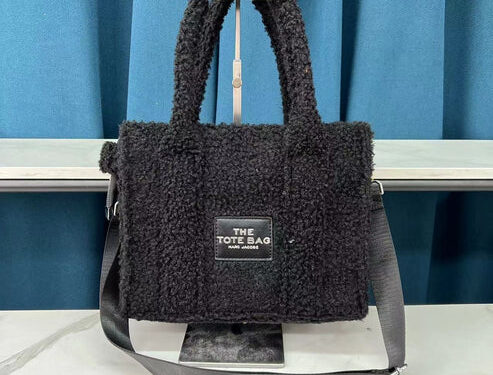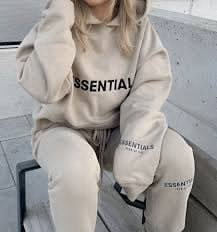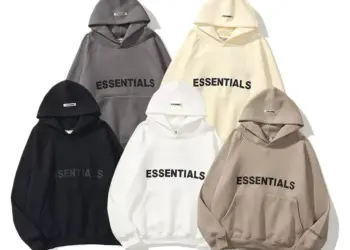The tote bag has come a long way from its utilitarian roots to becoming a staple in both casual and luxury fashion. Once a simple carryall, it now holds a prominent place in wardrobes worldwide, seamlessly blending function and style. The journey of the tote bag is a fascinating one, shaped by cultural shifts, evolving consumer needs, and the creativity of designers who have transformed it into a status symbol.
The Practical Beginnings of the Tote Bag
Originally designed as a utility bag, the tote bag was all about convenience. The term “tote” itself means “to carry,” reflecting its core purpose. These bags were first introduced in the early 20th century as sturdy, reusable carriers for heavy loads. One of the earliest and most iconic designs came in 1944, when L.L. Bean introduced the Boat and Tote bag, a durable canvas bag intended for carrying ice. Over time, this simple design found a broader audience, appealing to shoppers, students, and professionals alike.
The practicality of tote bags made them popular among various industries. Grocery stores, bookshops, and even libraries began offering branded tote bags as a sustainable alternative to plastic bags. With their spacious interiors and durable materials, they became essential for carrying everyday essentials, groceries, and even work materials.
The Tote Bag in Everyday Life
As the demand for multipurpose bags grew, tote bag started evolving in terms of design, material, and aesthetic appeal. The market witnessed the introduction of tote bags in various sizes, colors, and patterns, making them suitable for different occasions. Lightweight yet sturdy, these bags became a preferred choice for students, professionals, and travelers who required a reliable yet stylish carryall.
Eco-conscious consumers also played a significant role in the rising popularity of tote bags. With growing concerns about environmental sustainability, tote bags emerged as a favored alternative to disposable plastic bags. Many brands began incorporating recycled and organic materials into their designs, further boosting the tote bag’s reputation as a responsible fashion choice.
The Rise of Tote Bags in High Fashion
While tote bags were initially valued for their practicality, the fashion industry soon recognized their potential as a statement accessory. Luxury brands started incorporating high-end materials such as leather, suede, and designer fabrics to elevate the tote bag’s status. Leading fashion houses, including Louis Vuitton, Gucci, and Chanel, introduced their own versions of tote bags, turning them into symbols of elegance and sophistication.
Fashion runways and celebrity endorsements further propelled the tote bag into the realm of high fashion. Designers began experimenting with bold logos, intricate embroidery, and premium craftsmanship, making tote bags desirable for those who sought both function and exclusivity. The versatility of the tote bag allowed it to transition effortlessly from casual daywear to refined evening attire, making it a must-have accessory for fashion-conscious individuals.
The Influence of Streetwear and Minimalism
The modern fashion landscape has been heavily influenced by streetwear and minimalism, both of which have further popularized the tote bag. Brands like Supreme, Off-White, and Fear of God Essentials have introduced tote bags with bold graphics, limited-edition prints, and distinctive branding, catering to a younger, trend-driven audience.
Simultaneously, the minimalist fashion movement has embraced tote bags in neutral tones, emphasizing clean aesthetics and functional design. The appeal of an understated tote bag in materials like cotton canvas, soft leather, or vegan alternatives has resonated with consumers who value both simplicity and practicality.
The Tote Bag as a Reflection of Personal Style
Today, tote bags are more than just accessories—they are reflections of personal style and identity. From oversized totes ideal for weekend getaways to sleek leather versions perfect for business meetings, there is a tote bag for every occasion. The ability to customize and personalize tote bags has further enhanced their appeal. Many brands offer monogramming, custom prints, and unique design collaborations, allowing individuals to showcase their style through a bag that complements their personality.
Moreover, tote bags have become a canvas for self-expression. Whether displaying a favorite artwork, a social cause, or a luxury label’s iconic logo, they serve as a visual statement that aligns with individual preferences and values.
The Future of the Tote Bag
The evolution of the tote bag shows no signs of slowing down. As consumer preferences continue to shift toward sustainability, innovation, and versatility, the tote bag is expected to remain a dominant force in the fashion industry. Advancements in eco-friendly materials, smart design features, and digital customization are set to shape the future of tote bags, ensuring that they remain both stylish and practical.
Luxury brands will likely continue pushing the boundaries of tote bag design, blending tradition with modern aesthetics. At the same time, emerging designers and independent brands will introduce fresh takes on the classic tote, ensuring that this timeless accessory evolves with changing fashion trends.
Conclusion
The tote bag has journeyed from being a simple functional carryall to a global fashion statement. Whether as an everyday essential or a high-fashion accessory, it has secured its place as one of the most versatile and sought-after bags in the market. With its ability to adapt to consumer needs and fashion trends, the tote bag remains a timeless piece, proving that practicality and style can indeed go hand in hand.






